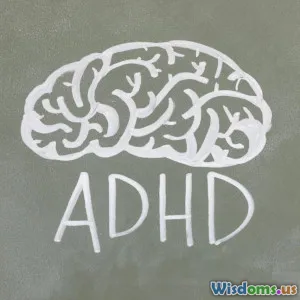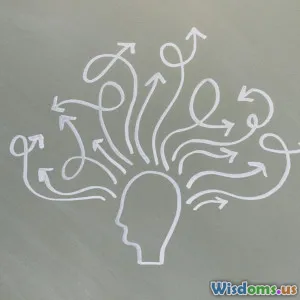
Neuroscience of Lucid Dreaming: A Deeper Dive
5 min read Explore the fascinating science behind lucid dreaming and its impact on the brain. (0 Reviews)
Neuroscience of Lucid Dreaming: A Deeper Dive
Lucid dreaming, the phenomenon where the dreamer becomes aware that they are dreaming, has fascinated scientists and dreamers alike for decades. This state of consciousness offers a unique window into the workings of the brain during sleep, revealing insights into memory, creativity, and even psychological healing. In this article, we will explore the neuroscience behind lucid dreaming, the brain regions involved, and the practical applications of this intriguing experience.
What is Lucid Dreaming?
Lucid dreaming occurs when a person realizes they are dreaming while still in the dream state. This awareness can allow the dreamer to exert some control over their actions and the narrative of the dream. The term 'lucid' comes from the Latin word 'lucidus,' meaning clear or light, which aptly describes the clarity of awareness experienced during such dreams.
The Brain and Sleep Stages
To understand lucid dreaming, we must first explore the various stages of sleep. Sleep is divided into two main categories: Non-Rapid Eye Movement (NREM) and Rapid Eye Movement (REM) sleep. Lucid dreams predominantly occur during REM sleep, which is characterized by vivid dreaming and heightened brain activity. During this phase, the brain exhibits activity similar to wakefulness, particularly in the prefrontal cortex — the area responsible for higher cognitive functions such as self-awareness, decision-making, and problem-solving.
Brain Regions Involved in Lucid Dreaming
Research has identified several brain regions that play crucial roles in lucid dreaming:
- Prefrontal Cortex: As mentioned, this region is linked to self-awareness and critical thinking. Increased activity here during REM sleep correlates with the realization of dreaming.
- Parietal Lobes: These areas help process sensory information and spatial awareness. Their activation may contribute to the dreamer's ability to manipulate dream environments.
- Hippocampus: Known for its role in memory formation, the hippocampus connects past experiences to the dream narrative, enriching the dreamer's experience.
The Science Behind Inducing Lucid Dreams
While some individuals may naturally experience lucid dreams, others may benefit from techniques designed to increase the likelihood of achieving lucidity. Here are a few popular methods:
- Reality Checks: Throughout the day, ask yourself whether you are dreaming. Common techniques include looking at your hands or a clock, as these often appear distorted in dreams.
- Mnemonic Induction of Lucid Dreams (MILD): Before sleep, repeat a phrase such as “I will realize I am dreaming” to reinforce your intention.
- Wake-Back-to-Bed (WBTB): Set an alarm to wake yourself after 5-6 hours of sleep. Stay awake briefly before returning to sleep, enhancing the chances of entering REM sleep consciously.
Benefits of Lucid Dreaming
Lucid dreaming is not just a curious experience; it offers various potential benefits:
- Therapeutic Applications: Lucid dreaming can serve as a tool for confronting fears and anxieties within a safe dream environment, aiding in overcoming nightmares and phobias.
- Enhanced Creativity: Many artists and problem solvers have reported using lucid dreams to tap into creativity, allowing them to explore ideas without the constraints of waking life.
- Skill Practice: Athletes and performers can practice skills in their dreams, which may enhance performance in reality by reinforcing neural pathways related to those skills.
Conclusion
Lucid dreaming presents a fascinating intersection of consciousness, neuroscience, and personal exploration. By understanding the brain processes involved and employing techniques to induce lucidity, individuals can harness the power of their dreams for creativity, emotional healing, and self-discovery. Whether you seek to confront your fears, enhance your artistic abilities, or simply experience the thrill of conscious dreaming, lucid dreaming opens the door to a rich inner world waiting to be explored.
Rate the Post
User Reviews
Popular Posts





















